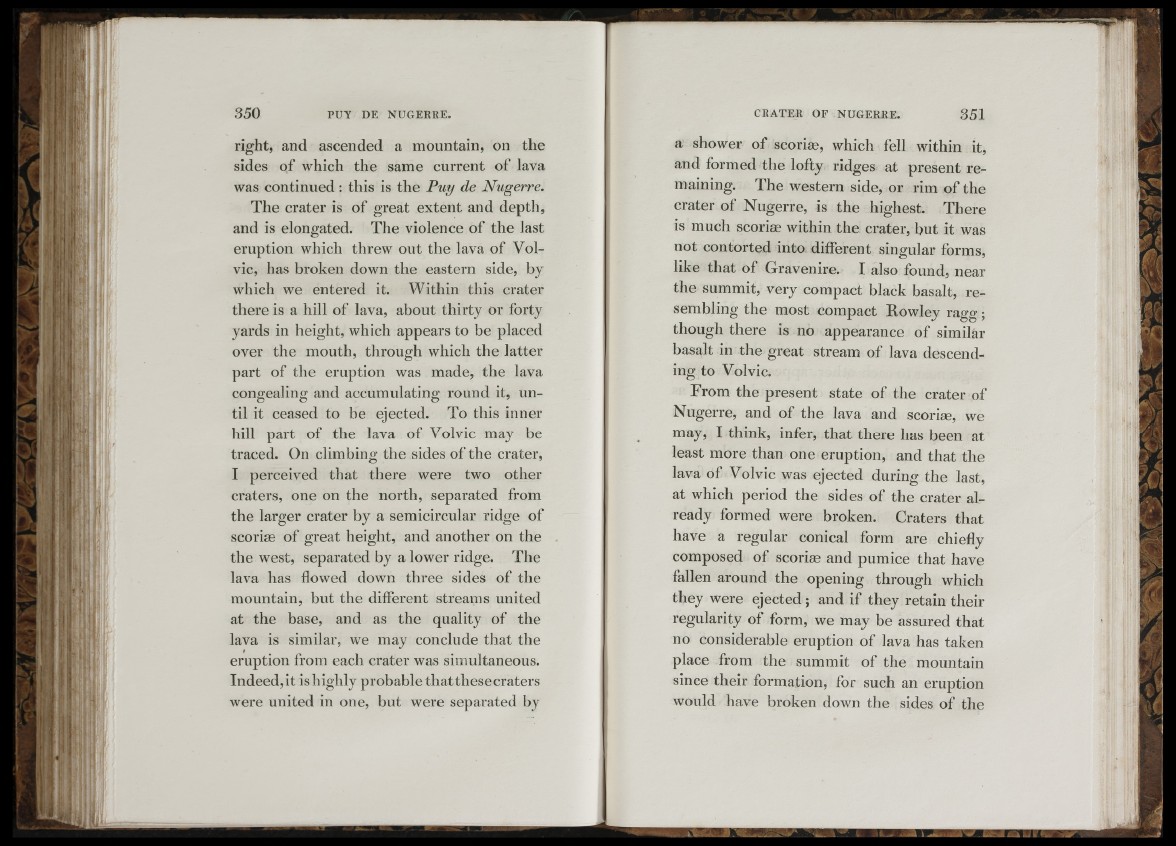
î ;
¡r- '
r=,.
te
right, and ascended a mountain, on the
sides of which the same current of lava
was continued : this is the Puy de Nugerre.
The crater is of great extent and depth,
and is elongated. The violence of the last
eruption which threw out the lava of Volvic,
has broken down the eastern side, by
which we entered it. Within this crater
there is a hill of lava, about thirty or forty
yards in height, which appears to be placed
over the mouth, through which the latter
part of the eruption was made, the lava
congealing and accumulating round it, until
it ceased to be ejected. To this inner
hill part of the lava of Volvic may be
traced. On climbing the sides of the crater,
I perceived that there were two other
craters, one on the north, separated from
the larger crater by a semicircular ridge of
scoriæ of great height, and another on the
the west, separated by a lower ridge. The
lava has flowed down three sides of the
mountain, but the different streams united
at the base, and as the quality of the
lava is similar, we may conclude that the
eruption from each crater was simultaneous.
Indeed,it ishighly probable that these craters
were united in one, but were separated by
351
a shower of scoriæ, which fell within it,
and formed the lofty ridges at present remaining.
The western side, or rim of the
crater of Nugerre, is the highest. There
is much scoriæ within the crater, but it was
not contorted into different singular forms,
like that o f Gravenire. I also found, near
the summit, very compact black basalt, resembling
the most compact Rowley ragg ;
though there is no appearance of similar
basalt in the great stream of lava descending
to Volvic.
From the present state of the crater of
Nugerre, and of the lava and scoriæ, we
may, I think, infer, that there has been at
least more than one eruption, and that the
lava of Volvic was ejected during the last,
at which period the sides o f the crater already
formed were broken. Craters that
have a regular conical form are chiefly
composed of scoriæ and pumice that have
fallen around the opening through which
they were ejected ; and if they retain their
regularity of form, we may be assured that
no considerable eruption of lava has taken
place from the summit of the mountain
since their formation, for such an eruption
would have broken down the sides of the